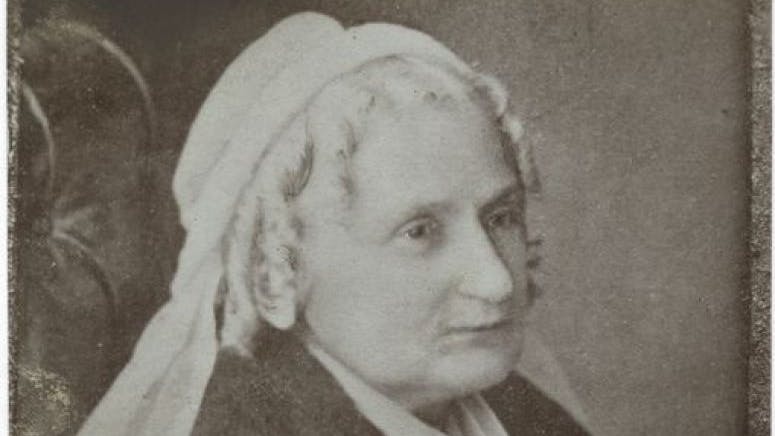The History of Washington's Headquarters Tent
One of the greatest treasures in the Museum's collection is George Washington’s Headquarters Tent. It was Washington’s sleeping and office quarters through most of the War of Independence — where he planned military campaigns, met with allies, and wrote his correspondence. Decisions that changed the course of history were made beneath its linen walls.
But the history of Washington's Headquarters Tent doesn't stop at the end of the war. Its journey from Revolutionary battlefields to the Museum's collection is a fascinating story in its own right, and one that touches on key events in American history. As part of The First Oval Office project, our team of historians and curators have been researching this journey. Our serialization of the dramatic tale is in progress, starting with the tent's precarious situation at the start of the Civil War.

Post One: Surviving the Civil War
Mary Anna Randolph Custis Lee, the great-granddaughter of Martha Washington who inherited Washington's Headquarters Tent, must abandon her home Arlington House — and the tent —when her husband Robert E. Lee decides to join the Confederacy.
Post Two: Behind Closed Doors
When Union troops take over Arlington House, looting soldiers pose a definite threat to the safety of the tent, until one slave, Selina Gray, appeals to a Union General to protect it and other Washington family relics still in the home.

Post Three: Safe Keeping
Washington's Headquarters Tent is put on temporary display for the general public within two weeks of its removal from Arlington House and arrival at the U.S. Patent Office Building. As the Civil War ends, questions of ownership arise.
Post Four: Reclaiming History
Mary Anna Randolph Custis Lee begins a legal battle with the U.S. government to reclaim her confiscated belongings after the war. But the public rails against the idea of Washington's relics being returned to private hands, particularly to a rebel like Robert E. Lee.
Post Five: A Family Affair
After Mary Anna Randolph Custis Lee's death, the fight to reclaim Washington's Headquarters Tent and other precious Washingtonia falls to her children, who continue their mother's crusade until the tent is finally restored to the family's care in 1901.